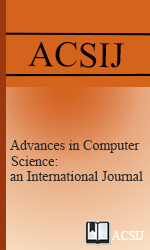An Efficient Mechanism for Data Rate Adaptation in Wireless LAN`s
Abstract
Today, wireless LANs are growing dramatically. Most of these networks are designed and run based on the IEEE 802.11 standard. Current specification of 802.11 provides multiple transmission rates in physical layer, which are used in various modulations. In order to apply multiple rates capability, the sender must select best transmission rates dynamically at different times according to channel quality and without feedback; choose explicit information from the receiver. Such practice is called the rate adaptation. This paper uses the statistical criteria such as the number of successful/unsuccessful packets and RTS/CTS control frames (Request to Send/Clear to Send) to infer the channel conditions. The proposed method we will be less stringent in increasing the transmission rate from the current rate to the higher one. However, in order to reduce transmission rate from the current rate to the higher one we are very careful. NS2 simulation results confirm the effectiveness of the proposed method.
Keywords
LANs; rate adaptation; IEEE 802.11 standard; simulation
 Advances in Computer Science : an International Journal
Advances in Computer Science : an International Journal







